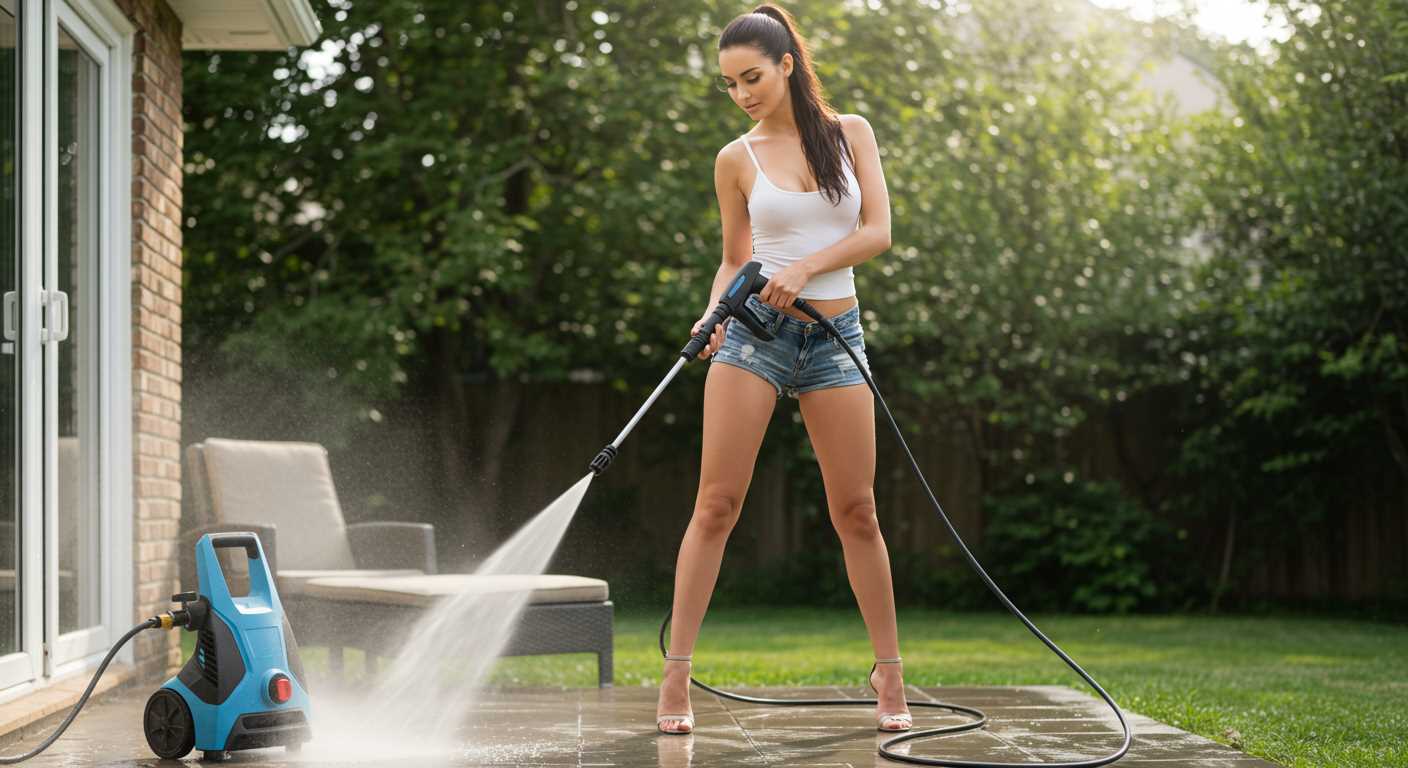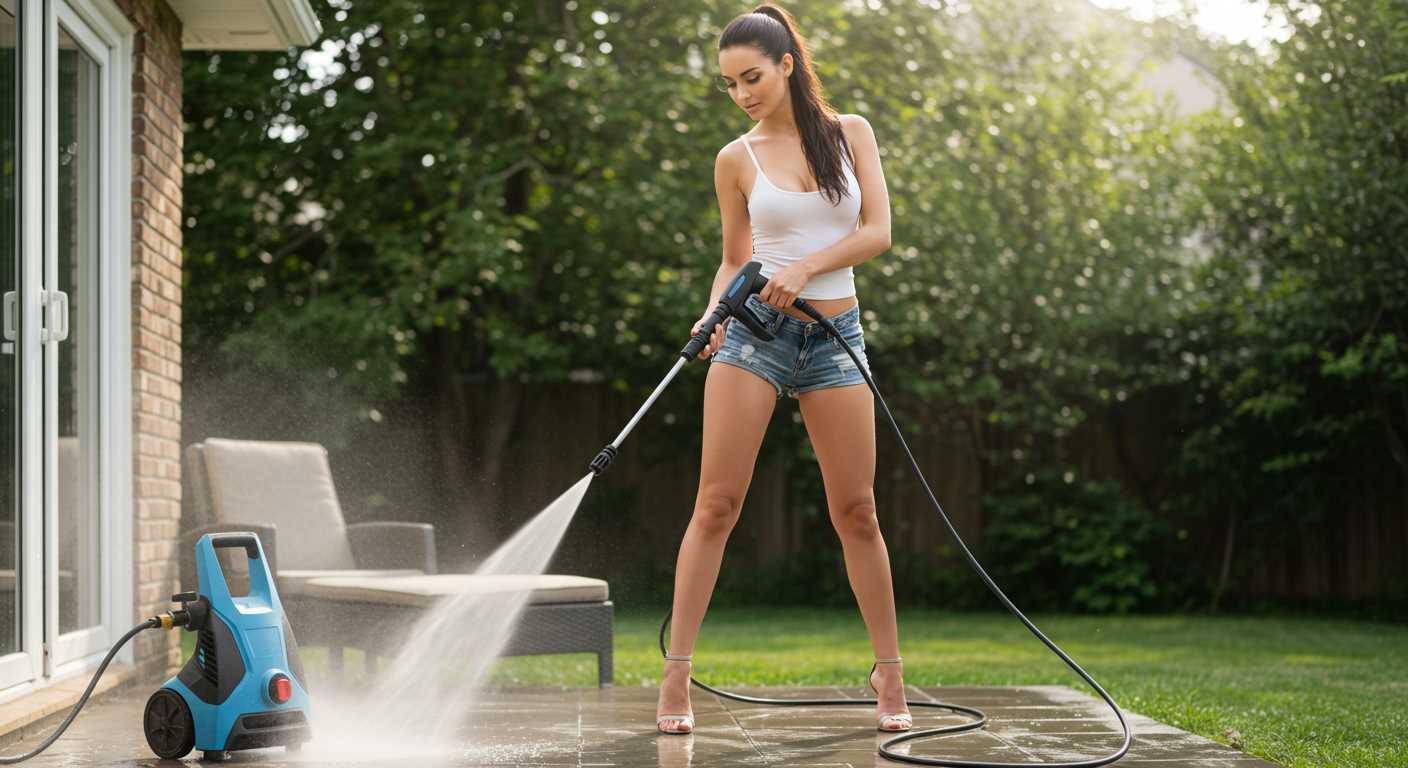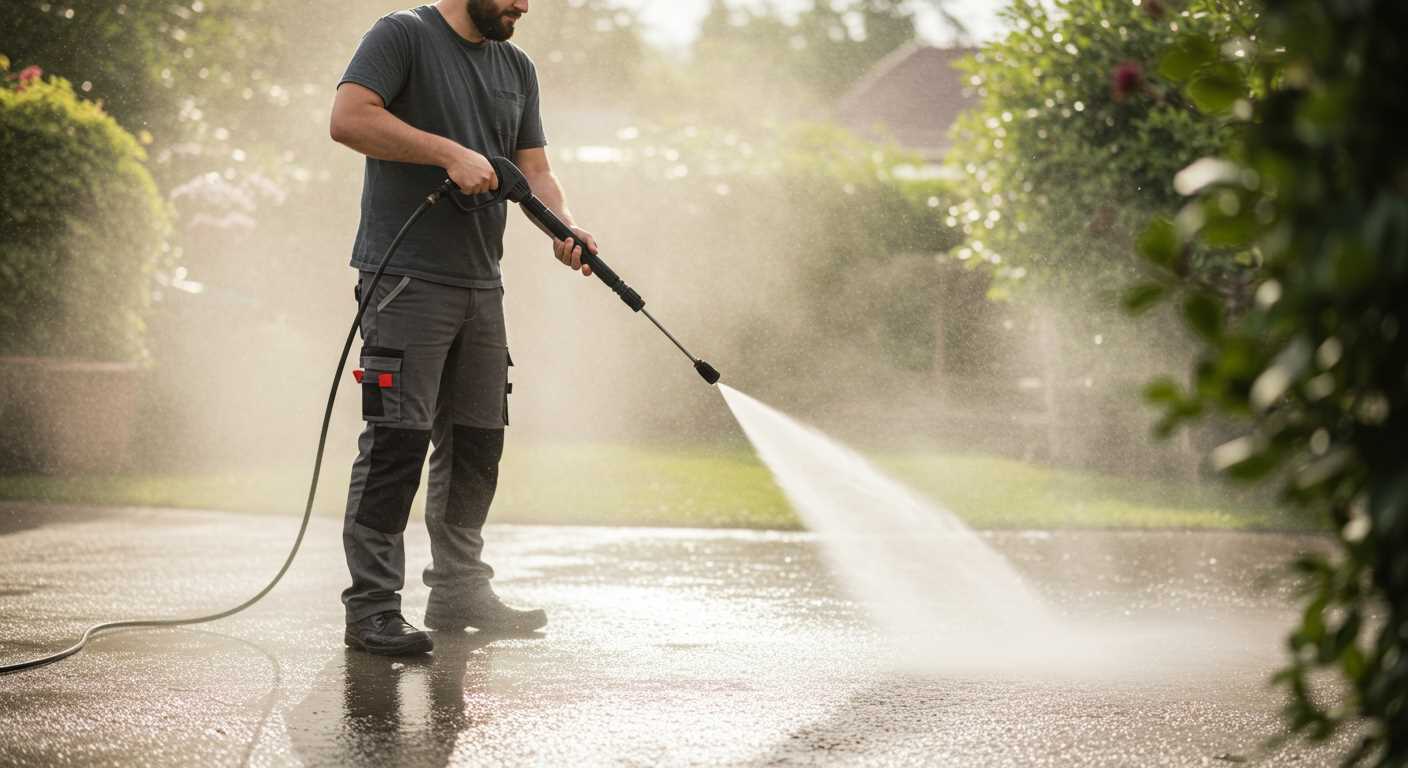




As a homeowner and DIY enthusiast, I often find myself tackling various cleaning projects around the house, from washing the car to cleaning the patio. One tool that has become indispensable in my arsenal is the pressure washer. However, with so many options available, understanding the different types of pressure washer pumps can be overwhelming. In this article, I’ll break down the various pump types, their benefits, and help you determine which is the best fit for your needs.
This article is designed for anyone considering a pressure washer purchase or looking to upgrade their current model. Whether you’re a professional cleaner or just someone who enjoys maintaining a tidy home, knowing the pump types can significantly impact the efficiency and effectiveness of your cleaning tasks.
I will cover the three primary types of pressure washer pumps: axial, triplex, and gear pumps. Each type has its own unique features and advantages, which I will explore in detail. By the end of this article, you’ll have a clearer understanding of what to look for in a pressure washer pump and how to make an informed decision that suits your cleaning needs. Let’s dive in and discover the best pressure washer pump type for you!
Understanding Different Pump Mechanisms
When it comes to pressure washers, the pump mechanism plays a crucial role in determining the machine’s efficiency and performance. Understanding the various types of pump mechanisms can help users make informed decisions, ensuring they select the right pressure washer for their cleaning needs. Different pump designs offer unique advantages and disadvantages, catering to various applications and user preferences.
The two primary types of pump mechanisms found in pressure washers are axial cam pumps and triplex pumps. Each type has its own characteristics that influence the overall functionality and longevity of the equipment.
Axial Cam Pumps
Axial cam pumps are commonly found in entry-level and mid-range pressure washers. They are designed with a simple mechanism that uses a cam to convert rotational motion into linear motion, driving the pistons.
- Advantages:
- Cost-effective and lightweight
- Easy to maintain and repair
- Disadvantages:
- Lower durability compared to triplex pumps
- Not suitable for prolonged heavy-duty use
Triplex Pumps
Triplex pumps, on the other hand, are designed for high-performance applications. They feature three pistons that offer a more balanced and efficient water flow, making them ideal for commercial and industrial use.
- Advantages:
- Higher durability and longer lifespan
- Consistent pressure output
- Disadvantages:
- Higher initial cost
- More complex maintenance requirements
Choosing between these two pump types ultimately depends on the intended use and frequency of use. Understanding the differences in pump mechanisms is essential for selecting a pressure washer that meets both performance expectations and budget constraints.
Comparing Triplex and Axial Pumps
When choosing a pressure washer pump, understanding the differences between triplex and axial pumps is crucial for making an informed decision. Each type offers unique features that cater to various cleaning needs and user preferences. Knowing the strengths and weaknesses of both can help users select the right pump for their specific applications.
Triplex pumps are often considered the more robust option, designed for heavy-duty tasks and prolonged use. They typically feature three pistons, allowing for a smoother flow of water and greater pressure consistency. This design contributes to enhanced durability and efficiency, making triplex pumps ideal for commercial settings or demanding residential applications.
Key Differences
In contrast, axial pumps utilise a simpler design with a single piston and are generally more suited for light to medium-duty tasks. They are often found in consumer-grade pressure washers due to their lower cost and ease of maintenance. However, this simplicity can lead to decreased efficiency and longevity compared to triplex pumps.
| Feature | Triplex Pumps | Axial Pumps |
|---|---|---|
| Durability | High | Moderate |
| Pressure Consistency | Excellent | Good |
| Cost | Higher | Lower |
| Maintenance | More complex | Simple |
| Best Use | Heavy-duty | Light to Medium-duty |
Ultimately, the choice between triplex and axial pumps will depend on the user’s specific requirements. For those who need a reliable and powerful pump for extensive cleaning tasks, investing in a triplex pump may be the best option. Conversely, casual users or those with less demanding tasks may find that an axial pump meets their needs effectively.
Durability Factors in Pump Selection
When selecting a pressure washer pump, durability is a critical consideration that directly impacts performance and longevity. The materials used in the construction of the pump play a significant role in determining how well it can withstand various operational stresses. High-quality materials can resist wear and tear, corrosion, and other forms of damage that may occur over time.
Another important factor is the design of the pump itself. A well-engineered pump should have features that enhance its durability, such as robust seals and bearings that reduce friction and prevent leaks. Additionally, the pump’s ability to handle thermal fluctuations and pressure variations is essential for maintaining its integrity during prolonged use.
Key Factors Influencing Durability
- Material Quality: Pumps made from brass, stainless steel, or high-grade plastic tend to last longer than those made from lower-quality materials.
- Seal Design: Effective seals prevent water ingress and protect internal components from damage.
- Maintenance Requirements: Pumps that are easier to maintain will likely have a longer lifespan, as regular maintenance can prevent minor issues from escalating.
- Thermal Management: The ability of the pump to dissipate heat can prevent overheating and associated damage.
- Pressure Rating: Selecting a pump that matches or exceeds the pressure requirements of the application can reduce stress and prolong its life.
In conclusion, considering these durability factors when choosing a pressure washer pump can lead to more reliable performance and fewer replacements over time. Focusing on high-quality materials, effective design, and appropriate maintenance can significantly enhance the lifespan of the pump.
Performance Ratings: PSI and GPM Explained
When evaluating pressure washers, understanding performance ratings is crucial. The two primary metrics that define a pressure washer’s effectiveness are PSI (Pounds per Square Inch) and GPM (Gallons per Minute). These figures provide insight into the machine’s ability to clean surfaces efficiently and effectively.
PSI measures the pressure at which water is expelled from the nozzle. A higher PSI indicates a stronger force, making it suitable for tackling stubborn dirt, grime, and stains. Conversely, GPM refers to the water flow rate, representing how much water is delivered per minute. A higher GPM means more water is used, which can aid in rinsing away dirt while preventing the need for excessive scrubbing.
Understanding the Balance
It is essential to find a balance between PSI and GPM for optimal performance. While high PSI can remove tough stains, it may not be as effective if the GPM is low, as there may not be enough water to wash away the debris. Conversely, a high GPM with low PSI may not penetrate deeply into surfaces, thus failing to remove ingrained dirt.
For different cleaning tasks, varying combinations of PSI and GPM will be required. For instance:
- Light cleaning tasks: Such as washing cars or cleaning patios may require lower PSI (around 1300-1900) and moderate GPM (1.2-2.0).
- Medium cleaning tasks: Like cleaning decks or driveways typically need a balance of around 2000-2800 PSI and 2.0-2.5 GPM.
- Heavy-duty cleaning tasks: Such as removing paint or cleaning industrial surfaces often necessitate high PSI (3000+) with substantial GPM (2.5+).
Ultimately, choosing a pressure washer should involve careful consideration of both PSI and GPM, ensuring that the selected machine meets the specific cleaning requirements. Understanding these ratings empowers users to make informed decisions, leading to more efficient and effective cleaning outcomes.
Maintenance Tips for Optimal Pump Longevity
Maintaining your pressure washer pump is crucial for ensuring its longevity and peak performance. Regular upkeep not only helps to prevent costly repairs but also optimises the efficiency of your cleaning tasks. Understanding the essential maintenance practices can extend the life of your pump significantly.
One of the key aspects of pump maintenance is proper cleaning. After each use, ensure that the pump and its components are free from debris and contaminants. This simple step can prevent clogs and enhance your pump’s functionality.
Essential Maintenance Practices
- Regular Inspection: Periodically check for any signs of wear or damage. Look for leaks, cracks, or any unusual noises during operation.
- Fluid Checks: Ensure that the pump is filled with the correct type of oil and that it is at the appropriate level. Change the oil as recommended by the manufacturer.
- Winterisation: If you live in a region with freezing temperatures, properly winterising your pump is essential. Use antifreeze to prevent damage during cold months.
- Seal Maintenance: Inspect and replace seals as needed to prevent leaks and maintain pressure. Worn seals can lead to significant performance issues.
- Storage Conditions: Store your pressure washer in a dry, protected area to avoid exposure to the elements, which can cause corrosion and wear.
By incorporating these maintenance tips into your routine, you can significantly enhance the lifespan and reliability of your pressure washer pump. Regular care not only saves you money in the long run but also ensures that your cleaning tasks are completed efficiently and effectively.
Noise Levels: Impact on User Experience
When it comes to pressure washers, noise levels play a significant role in shaping the overall user experience. Many users may underestimate the importance of sound, yet it can greatly influence not only the comfort of use but also the effectiveness of the cleaning task at hand. A quieter machine allows users to work for extended periods without fatigue or irritation, making it an essential consideration when selecting a pressure washer pump type.
Excessive noise can be distracting, potentially making it difficult to concentrate on the cleaning job. Additionally, for those living in residential areas, using a loud pressure washer can disturb neighbours, leading to complaints or even conflicts. Therefore, understanding the noise levels associated with different pump types is crucial for maintaining a harmonious environment while achieving desired cleaning results.
Factors Contributing to Noise Levels
- Type of Pump: Different pump designs produce varying noise levels. For instance, axial pumps are typically quieter compared to triplex pumps.
- Motor Size: Larger motors often generate more noise, which can be a consideration for users prioritising quieter operation.
- Build Quality: Well-constructed machines may have better sound insulation, reducing overall noise output.
Ultimately, the choice of pressure washer pump type should take into account not only the cleaning performance but also the noise output. A balance between efficiency and user comfort can enhance the overall experience, making the task of cleaning more enjoyable and less of a chore.
Cost Analysis: Budgeting for Quality Pumps
When considering a pressure washer, understanding the cost associated with different pump types is crucial for making an informed decision. The pump is the heart of the pressure washer and can significantly influence its performance, longevity, and maintenance needs. Investing in a quality pump may require a higher initial expenditure, but it can lead to lower long-term costs due to reduced repair and replacement needs.
Budgeting for a pressure washer pump involves analysing various factors, including the type of pump, its durability, and the expected usage frequency. A cheaper pump may save money upfront but can result in frequent repairs or replacements, ultimately increasing overall costs. Conversely, a higher-quality pump might have a higher purchase price but can provide greater efficiency and a longer lifespan.
Key Considerations for Budgeting
- Initial Cost: Assess the starting price of different pump types, keeping in mind that higher quality usually comes at a premium.
- Longevity: Consider the expected lifespan of the pump; quality pumps often last longer, leading to cost savings over time.
- Maintenance Requirements: Evaluate the maintenance needs; some pumps require regular servicing that can add to overall costs.
- Repair Costs: Research potential repair costs for different pump types, as some may have readily available parts while others may not.
In conclusion, while it is tempting to opt for the most affordable option, a thorough cost analysis that weighs both initial investment and long-term expenses will lead to a more satisfying choice. By prioritising quality in your budget, you can ensure that your pressure washer performs effectively and reliably over its lifespan.
Choosing the Right Pump for Specific Cleaning Tasks
When selecting a pressure washer pump, it is essential to consider the specific cleaning tasks you intend to perform. Different pump types offer varied performance characteristics, making them suitable for specific applications. Understanding these differences can significantly enhance your cleaning efficiency and effectiveness.
Moreover, the choice of pump can impact not only the quality of cleaning but also the overall longevity and reliability of your pressure washer. By aligning the pump type with your intended use, you can ensure optimal performance and satisfaction.
Conclusion
In summary, selecting the right pump for your pressure washer is crucial for achieving the best results in your cleaning tasks. Here are the key points to consider:
- Triplex Pumps: Ideal for heavy-duty tasks such as commercial cleaning and large surfaces.
- Axial Pumps: Suitable for light to medium-duty tasks, perfect for home use and smaller jobs.
- Direct Drive Pumps: Great for budget-friendly options but may have a shorter lifespan.
- Belt Drive Pumps: Provide better durability and performance for professional cleaning applications.
By understanding the strengths and limitations of each pump type, you can make an informed decision that meets your specific cleaning needs. Whether you are a homeowner or a professional cleaner, choosing the right pump will ensure that your pressure washing tasks are completed efficiently and effectively.
Top 10 Best Pressure Washer Pump Type








Best Pressure Washer Pump Type
Features
| Part Number | 100948_43 |
| Model | 100948_43 |
Features
| Part Number | 4400 PSI Pressure Washer Pump |
| Model | QXB-6 |
| Color | Black |
Features
| Part Number | EPW-1506-5A |
| Model | CF 3030 G |
| Color | Black |
Features
| Part Number | 100949 |
| Model | 100949 |
| Color | Silver |
Features
| Part Number | 80148 |
| Model | 80148 |
| Color | Black |
| Size | 4500 PSI Handle |
Features
| Part Number | 10-100-282 |
| Model | P70 |
| Warranty | Up to 20 Year Warranty (Subject to service every 5 years). |
| Color | Ava Charcoal/Ava Green |
| Size | Large Bundle |
Features
| Part Number | 4336551515 |
| Model | 4336551515 |
| Color | Black |
Features
| Part Number | 100949 |
| Model | 100949 |
| Color | Black |
Video:
FAQ:
What are the different types of pressure washer pumps available?
There are three main types of pressure washer pumps: axial pumps, triplex pumps, and diaphragm pumps. Axial pumps are typically found in electric pressure washers and are suitable for light to medium tasks. They are less durable than other types but are affordable and easy to maintain. Triplex pumps, often used in gas-powered pressure washers, are more robust and can handle heavier tasks, providing higher pressure and flow rates. Diaphragm pumps are used for specific applications, such as cleaning with chemicals, as they can handle a variety of fluids without corroding.
Which pump type is best for residential use?
For residential use, axial pumps are generally the best choice. They are perfect for tasks like washing cars, cleaning patios, and light-duty home maintenance. Their lower cost and ease of use make them accessible for most homeowners. However, if you plan to undertake more demanding cleaning projects, such as stripping paint or cleaning large surfaces, a triplex pump might be a better option due to its durability and higher performance capabilities.
How do I know if I need a triplex pump for my pressure washer?
If you regularly engage in heavy-duty cleaning tasks or require consistent high pressure for your jobs, a triplex pump would be a wise investment. These pumps are built to withstand prolonged use and can maintain high pressure over time, making them ideal for commercial applications or for homeowners with extensive cleaning needs. If your cleaning tasks include removing tough grime or working on larger areas, the durability and performance of a triplex pump will pay off.
What maintenance do pressure washer pumps require?
Maintaining your pressure washer pump is crucial for its longevity and performance. Regularly check for leaks and ensure all connections are tight. It’s also important to flush the pump with fresh water after each use to remove any detergent residues. Additionally, inspect the pump oil levels if applicable, and change the oil as recommended by the manufacturer. Keeping the pump clean and free from debris will help prevent clogs and ensure smooth operation.




.jpg)


